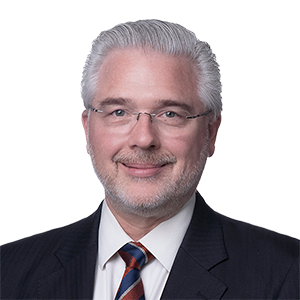On March 19, 2021, the SEC’s ESG Subcommittee (the Subcommittee) convened a panel to discuss the Commission’s efforts to develop a framework for mandatory ESG disclosures. We previously discussed the Subcommittee’s preliminary recommendations. The panel included representatives from public companies and asset managers. One takeaway from the meeting is that adopting ESG disclosures will be a complex process that must balance the interests of investors with the burden on public issuers, recognizing that one set of standards is unlikely to apply to every issuer.
Before the panel convened, each SEC Commissioner highlighted concerns about the existing disclosure framework and calls to revamp the framework to address ESG matters.
Acting Chair Allison Herren Lee, who recently invited public comments on mandatory climate disclosures (see our previous update), began by stating “consistent, comparable, and reliable” disclosures are essential for managing investment strategies. Commissioner Caroline Crenshaw agreed, stating that “investors are using ESG-related information to make investment decisions and to allocate capital more than ever before.” Crenshaw added that the Commission “should be working toward … a clear disclosure regime that yields consistent, comparable, reliable, and understandable ESG disclosures to investors.”
Commissioner Hester Peirce pushed back on prescriptive disclosures, expressing concern that “[t]o get broad ESG disclosure[s] … we have to reimagine materiality” which “is the same as tossing it in favor of a more malleable new [definition].” Peirce said she is “happy to consider new SEC mandates for specific metrics that are likely to be material to every issuer in every industry,” but the current debate painted “in broad strokes that obfuscate the immaterial nature of many of the specific underlying disclosures.” Peirce questioned the “wisdom of recommending that [the SEC] embark on a program to write standards for a set of issues nobody can define,” and noted that sustainability standards “are not akin to accounting standards, which serve a clear, time-tested, universally understood objective.” Peirce concluded that “[h]aving the SEC build a GAAP-like edifice around ESG standards would give investors a false sense of confidence in standards that are subjective, shifting, and sometimes even senseless.”
Commissioner Elad Roisman also expressed concerns, and posed questions to the panel:
- How do asset managers gauge what investors are looking for in ESG products, and design and market products that are tailored to investors’ interests?
- To the extent asset managers focus on minimizing risk and achieving high returns, what specific E, S, and G information is needed from issuers and why? How does that information relate to valuing potential targets for investment and valuing portfolio companies on an ongoing basis?
- How do asset managers currently obtain ESG information – using Sustainability Accounting Standards Board (SASB) or Task Force on Climate-related Financial Disclosure (TCFD) standards, or something else?
- How have European disclosure mandates, such as the Sustainable Finance Disclosure Regulation, factored into asset managers’ decisions about what information to seek?
- Why is comparability of ESG disclosures so important given the SEC does not demand perfect comparability across all categories of material information?
- If the SEC were to rely on a third-party standard setter to identify what ESG information is material, how would the SEC oversee such a third party? Should the SEC extend its oversight further, for example, to ESG-index providers and ESG-rating agencies, since so many “ESG” funds and investment products are derivative of their work?
- How can the Commission mitigate the burden on public issuers who are working with investors to provide them with ESG information?
- Should the SEC consider allowing ESG disclosures to be furnished rather than filed? And should the SEC consider a new safe harbor, depending on particular conditions such as the presence of cautionary language?
Three themes emerged from the panel discussion.
First, the panelists agreed that ESG disclosures must remain grounded in materiality – though the panelists differed on what that means, exactly. As one panelist explained, ESG information does not become material simply because some individuals or firms express interest in the information. Rather, materiality must remain grounded in Supreme Court precedent, which provides that information is material when a reasonable investor would view it as significantly altering the “total mix” of available information. Another panelist said that more information is not the same as better information. And another panelist recognized that what is material can change quickly, therefore any disclosure regime must provide flexibility and adaptability.
Second, the panelists recognized that there is much uncertainty in ESG matters. One panelist described voluntary disclosures as a “journey” when compared with financial disclosures, which have had an established set of standards for years. The panelist said that assessing risk under climate scenarios requires specialized expertise, and that hiring someone outside of an issuer with that expertise was costly and came with its own challenges. Another panelist recognized that modeling can become complex, particularly when the models include macroeconomic variables (such as the impact of an individual corporation on global temperatures). The panelists agreed that given this uncertainty, ESG disclosures should be protected by a safe harbor.
Third, the panel agreed that any ESG disclosure framework must provide flexibility and adaptability. One panelist recognized that while the concept of having a single blueprint is enticing, there is no one right way to provide sustainability reporting. The panelist felt that company management is in the best position to determine what information is material, considering the industry, facts, and circumstances, and that any ESG disclosure framework must provide enough flexibility to recognize specific differences between industries.
The panel concluded with representatives from asset managers stating that climate risk is an investment risk that affects long-term returns. The first panelist stated that her firm had estimated that transitioning to a low-carbon economy would lead to gains of approximately 25 cumulative percentage points for investors over the next 20 years. Also of note was her statement that her firm would strongly prefer companies to align with both SASB and TCFD standards, at least, unless and until the SEC creates its own ESG disclosure regime. She also expressed concern that companies with high climate impact will shift to the private sector to avoid ESG disclosure requirements, and encouraged the Subcommittee to consider methods and recommendations for the Commission to mandate ESG disclosures for private companies to the extent the Commission is able to do so. The other panelist added that the lack of proliferation of standards is costly and therefore an ESG disclosure regime grounded in materiality could create certainty and efficiency that is lacking today.
Edward Bernard, chair of the Subcommittee, concluded the panel discussion by stating that the Subcommittee will continue to explore all points of view before voting on a final recommendation.
See Commissioner Peirce’s prepared remarks before the committee; see Commissioner Roisman’s prepared remarks. Commissioner Roisman concluded his remarks by inviting anyone interested in discussing these matters directly with him to do so. On March 22, 2021, the Commission also launched a new web page that catalogues its climate and ESG-related efforts.






